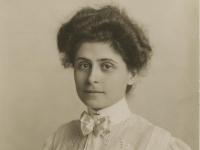This blog was written by Lynn Darby, a Cultural Fieldwork Intern from Temple University’s School of Education.
So what is the Women's Suffrage Movement?
From the 1700s to present day, women have been in a longstanding battle for equality. Through reaching hard fought milestones and supporting other marginalized groups to push the overall agenda of equality, women’s fight for equal rights has certainly come a long way. If you’re looking for resources to help supplement your lesson about the Women’s Suffrage Movement, specifically around the time of the 19th Amendment, look no further! The Caroline Katzenstein papers give insight into the climate around the years leading up to the ratification of the 19th Amendment. One source is a map showing which Pennsylvania counties voted for and which ones voted against 1915, five years prior to its ratification; another is a broadside published by the National Women’s Party on why they picketed at the White House and other documents pertaining to the movement.
How to use it?
Here is a suggestive guide that can provide some insight. If you are already teaching about the Suffrage Movement, make sure your students have prior knowledge of the movement itself before introducing these primary source documents. They are extremely good for further worksheet analysis after students already have developed a general understanding. I would utilize both the “Why We Picket” document and “Women Voters Vote Against Wilson” for students to look over after they already have a general understanding of the climate of America in the years leading up to the 19th Amendment. Have them partner up or get in groups to find and discuss their opinion on the similarities between the documents. From there, have students complete a 1-2 page reflection comparing their prior knowledge to what they read in the two documents.
What else?
The “Caroline Katzenstein open letter to fellow-suffragists on behalf of the Pennsylvania Woman Suffrage Association” provides a look into how the Women’s Suffrage Association operated in its early days. Self explanatory in its title, this document allows students a firsthand look at what Katzenstein wanted to relay to fellow Suffragists. Students can pick apart this document to again get a feel for how an organization supporting Women’s Suffrage went about its work and to further their understanding of the movement.

